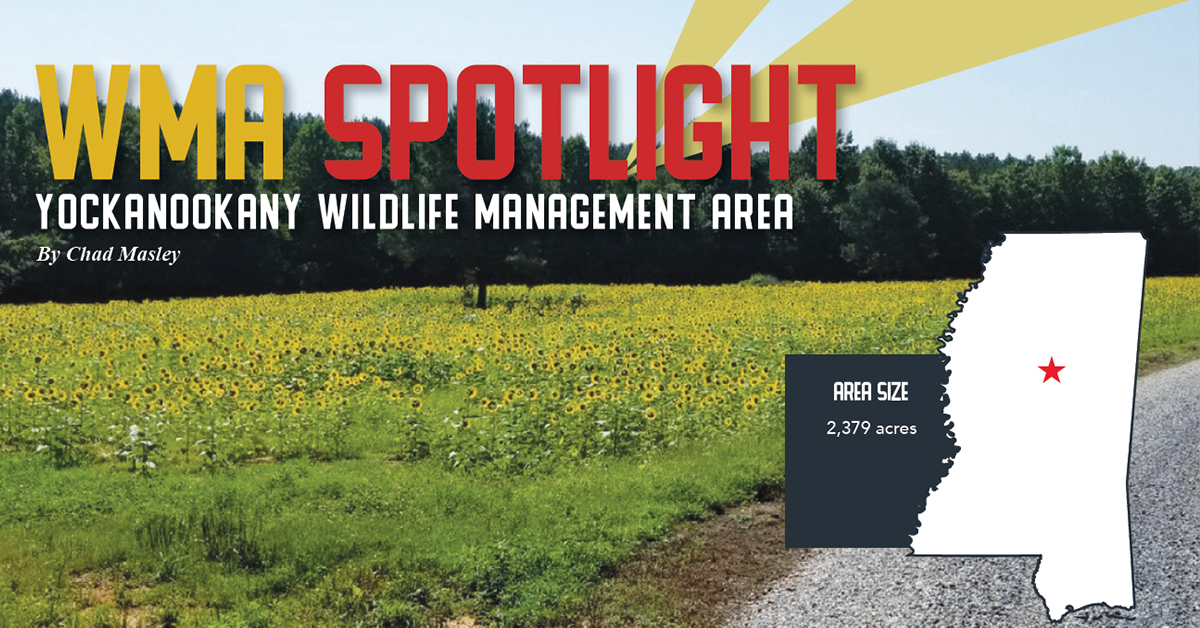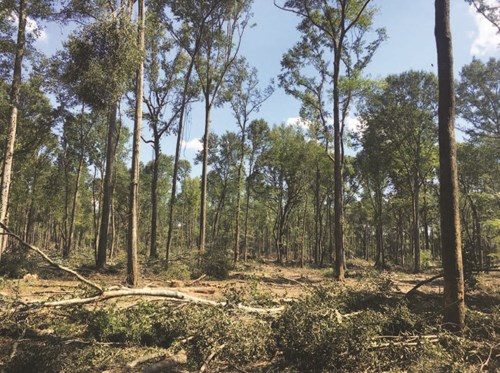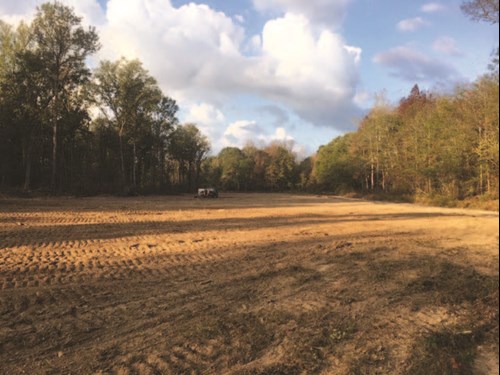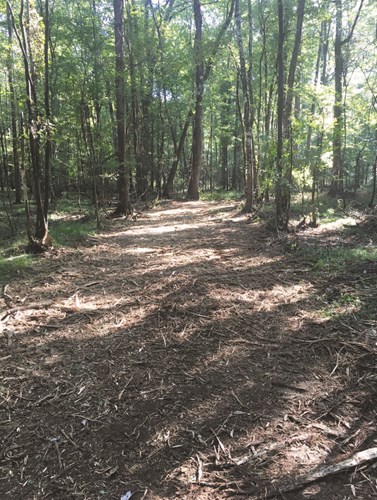5/29/2020 10:40:18 AM
By Chad Masley

Location
The 2,379-acre Yockanookany Wildlife Management Area (WMA) is located east of Kosciusko, near McCool in Attala County. From the intersection of Highway 35 and Highway 12 in Kosciusko, go east on Highway 12 for approximately 11.5 miles and then turn right into the WMA parking area at the red entrance gate.
History
Yockanookany WMA was acquired in 1998, and additional acres were later purchased to expand and improve upon the area. The area is named after the Yockanookany River, which transects the entire WMA. The diverse, fertile soils along the Yockanookany River, a Pearl River tributary, have created a bottomland hardwood ecosystem that is home to a variety of wildlife species. Most upland stands have been harvested within the last 35-40 years and are now dominated by sweetgum trees, which have shaded out a large amount of deer browse. A 75- to 100-acre water tupelo swamp, which is virtually inaccessible, is located on the area’s eastern boundary.
Wildlife Habitat
The Yockanookany Canal, in addition to several oxbows of the old river, runs the area’s length. It makes this area highly susceptible to flooding with moderately heavy rainfall. However, the channelized canal reduces the area’s flood duration. These frequent floods refill the old river oxbows, which provide high-quality fishing opportunities. These oxbows provide some duck hunting opportunities, as well. There is also a 25- to 30-acre, naturally flooded, shallow pond on the area, which offers additional duck hunting opportunities.

Timer thinning promotes understory development
The bottomland hardwood forest types vary in size and age structure with a small portion of upland, open-field habitat. Over time, the hardwood timber stands matured, creating a closed canopy forest that slowly eliminated any understory vegetation. Food, cover, and shelter became a much-needed habitat component across the landscape. In 2013, a more in-tensive habitat-management program began. This program includes timber thinnings, creating largescale wildlife openings, daylighting existing roads, and creating miles of new trails that improve access across the area. These enhancements have directly affected more than 400 acres and provided improved accessibility to more than 1,000 acres. The timber thinning operations removed trees to open up the forest canopy, allowing sunlight to reach the forest floor and promoting a diverse plant community in the understory. This understory that was once absent is now in abundant supply, fulfilling a significant habitat component that a majority of wildlife species depend on and now can utilize. The percentage of wildlife openings was an-other habitat type that was in short supply, but far more readily available across the landscape. New trails provide better access for public use and serve as travel pathways for wildlife. Plans are to continue to spread these habitat improvements across the landscape to grow wildlife populations and improve the recreational opportunities offered on Yockanookany WMA.

Creating an opening for wildlife habitat improvement
Hunting opportunities
Wildlife populations have responded positively to the habitat-management practices implemented across Yockanookany WMA. Deer numbers are on the rise because of the increased understory component creating an abundance of bedding cover, browse, and escape cover. Limited deer hunting pressure over the past several years has allowed Yockanookany to practically serve as a sanctuary, allowing for an increased number of bucks to reach maturity and providing a great opportunity for harvesting quality deer.
The turkey population also is typically high, especially considering the area’s susceptibility to flooding. Floods in this water-shed can occur quickly after heavy rain upstream. The active flooding regime does disrupt a large portion of the turkey nesting season, as well as cause birds to leave the area altogether after heavy rain. However, when the area is dry, turkey hunting should be excellent.

Mulching roads improves accessibility
Squirrel numbers are plentiful throughout the area, especially in older timber stands. Fair mast-crop yields should maintain a huntable squirrel population, but the mast production has not been high enough to raise the population significantly. Rabbit populations have been low mainly because of a lack of habitat but could increase in response to understory growth from habitat-management activities.
Dove hunting is a relatively new opportunity offered on Yockanookany. Enjoying some quality wing shooting over a 20-acre sunflower field is a great way to start your hunting season. Dove harvest numbers have been known to exceed 400 on opening day some years. This is a popular and exciting way for both youth and adults to enjoy the outdoors.
For more information
For more information on WMAs in Mississippi, visit www.mdwfp.com/wildlife-hunting/wma or contact the MDWFP Wildlife Bureau at (601) 432-2199.









